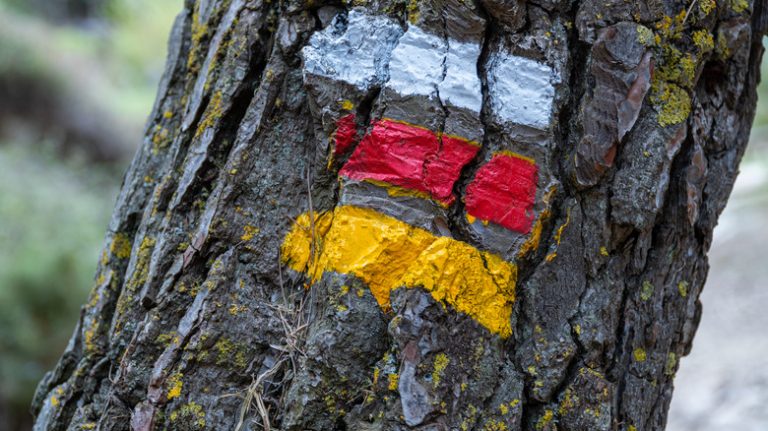The sugar maple (Acer saccharum) is a native tree species in North America and is commonly found in various locations including Ontario and the Adirondacks. It is known for its historical significance and the guaranteed vibrant yellow-bellied appearance it brings to any landscape. The tree grows twice the size of most other trees and provides shade and evergreen beauty all year round. Its strong and durable wood is often selected for use in furniture and cabinetry. The sugar maple is also well-known for its production of sweet sap, which is used to make maple syrup, a popular beverage.
The sugar maple’s reproductive cycle begins in early spring, when the tree’s buds open and its vibrant leaves start to emerge. During this time, the sugar maple’s flowers provide an important source of food for many songbirds and the yellow-bellied woodpecker. As the tree reaches maturity, it produces numerous winged seeds, known as samaras, which are dispersed by the wind to give birth to new saplings. The sugar maple’s silvics, or tree characteristics, make it a preferred option for those looking to add beauty and value to their landscape.
The sugar maple is not only valued for its appearance and wood, but also for its habitat. It provides a home to many native shrubs, ferns, and other understory plants, creating a diverse ecosystem. It is often found in maple-basswood forests, where it thrives alongside other tree species such as the red maple and the spruce-northern white. This diverse habitat supports a wide range of wildlife, including various songbirds, moth species, and larger mammals.
Overall, the sugar maple is an iconic tree in North America, beloved by many Americans for its beauty, historical significance, and the maple syrup it produces. Whether you have a large backyard or a small patio, planting a sugar maple will not only add visual appeal but also benefit the ecosystem. For additional information on this majestic tree and how to care for it, please contact your local university’s dendrology department or refer to reputable sources such as Princeton’s Guide to Trees by John L. Stackpole.
Sugar Maple Tree
The sugar maple tree, or Acer saccharum, is a native hardwood tree found in the forests of North America. It is a fast-growing tree that can reach heights of up to 100 feet and has a variable shape. The leaves of the sugar maple are greenish in color and have a pointed shape. In the fall, they turn vibrant shades of red, orange, and yellow, making the tree a popular choice for landscaping in the autumn months.
The sugar maple is known for its value in the maple syrup industry. The sap of the sugar maple contains a high sugar content, making it ideal for producing maple syrup and other maple-based products. In addition to its economic value, the sugar maple also provides important habitat and food sources for a variety of wildlife. Songbirds, woodpeckers, and caterpillars are just a few examples of the wildlife that rely on the sugar maple tree for food and shelter.
In addition to its uses in the maple syrup industry and as a habitat for wildlife, the sugar maple also has historical and cultural significance. The tree has been used for centuries by indigenous peoples for its wood, which is used in the construction of furniture, flooring, and other items. The sugar maple also plays a role in the cultural traditions of many communities, particularly in areas like the Adirondacks, where maple sugaring has been a long-standing tradition.
If you are considering planting a sugar maple tree in your garden or landscape, it is important to choose a location that is well-drained and has access to full sunlight. The sugar maple thrives in a variety of soil types, including clay, loam, and sandy soils. It is also tolerant of acidic and calcareous soils. The sugar maple is a long-lived tree and can live for over 200 years under ideal conditions.
The sugar maple is a popular tree for landscaping and provides many benefits to both humans and wildlife. Its beautiful fall foliage, fast-growing nature, and economic value make it a desirable tree to plant. Whether you are interested in the historical and cultural significance of the tree, or simply want to enjoy its beauty in your backyard, the sugar maple is a tree that is sure to enhance any landscape.
Fast-Growing
The sugar maple is known for being a fast-growing tree. It grows quickly and can reach heights of up to 100 feet. Its greenish leaves and beautiful flowers make it a popular choice for landscaping and creating a natural habitat for wildlife. The wood of the sugar maple is highly valued for its durability and is often used in furniture and flooring.
The sugar maple begins to flower in March, producing small yellow flowers that are a favorite food source for many wildlife species, including birds like the yellow-bellied sapsucker and the ruby-throated hummingbird.
John, a young boy from Ohio, submitted a program to the Stackpole edition of the “Fast-Growing Trees” competition, suggesting ways to promote the growth of sugar maples. His one-time program was a success, resulting in the planting of over a million sugar maple trees in various parts of the country. This initiative aimed to provide high-quality habitat for woodland wildlife and to ensure widespread access to the valuable wood of the sugar maple.
The sugar maple has a long life span and can live for more than 300 years. It grows best in well-drained, moisture-rich soil and is commonly found in woodland habitats with calcareous or variable soils. It can also be found on talus slopes, suggesting its adaptability to different types of habitats.
The sugar maple is often planted as an ornamental tree in parks, gardens, and along residential streets. Its vibrant foliage, ranging from bright green in the spring to yellow and red in the fall, adds beauty to any landscape. Additionally, its canopy provides shade and shelter for smaller plants, making it an excellent choice for creating a patio or outdoor living area.
In addition to its aesthetic value, the sugar maple has many practical uses. Its sap is used to produce maple syrup, a popular sweetener and flavoring in many households. The wood of the sugar maple is highly prized for its strength and is often used to make furniture, flooring, and musical instruments. Its leaves are a favorite food source for deer and other herbivores, making it an important part of their diet.
In conclusion, the sugar maple is a fast-growing tree that is well-known for its greenish leaves, beautiful flowers, and valuable wood. It is a popular choice for landscaping and creating wildlife habitat. Its fast growth, adaptability to different habitats, and high-quality wood make it a versatile and beneficial tree.
Flowering
The flowering period of the sugar maple typically occurs in the spring, though the exact timing may vary based on geographic location and weather conditions. During this time, the trees produce clusters of small, yellow-green flowers that are high in nectar and serve as an important food source for various insects, including bees and other pollinators. The flowers can be found on the branches and twigs.
The sugar maple uses wind-pollination as its primary method of reproduction. The presence of nectar in the flowers attracts insects, which then transfer pollen from one flower to another. This process aids in fertilization and the development of seeds.
The flowering period also coincides with the emergence of the sugar maple’s young leaves, which appear a yellowish-green color. As the leaves mature, they turn a darker green and provide the tree with its characteristic foliage.
In the Northeastern region of North America, including areas such as Ontario and the Adirondack Mountains, the sugar maple is known for its vibrant fall foliage. The leaves turn various shades of yellow, orange, and red, creating a stunning display of autumn colors.
Flowering is an important aspect of the sugar maple’s lifecycle, as it ensures the production of seeds and the continuation of the species. It also plays a vital role in supporting the ecosystem, as many animals, including birds and small mammals, rely on the sugar maple for food and habitat.
The sugar maple’s flowers are not typically conspicuous, and they may go unnoticed by casual observers. However, if you are interested in studying the sugar maple’s reproductive cycle in more detail, there are resources available from organizations such as the University of New Hampshire’s Project Maple.
It is worth noting that while some maples, such as the red maple, produce showier flowers, the sugar maple’s flowers are relatively small and not as visually striking. However, their importance in the tree’s reproductive cycle should not be underestimated.
Fruit Nut
The fruit of the sugar maple tree is commonly known as a samara, which is a winged seed. These samaras are produced after the tree’s yellow-bellied flowers appear in the spring. The samaras are greenish in color and have a curled appearance. They are often eaten by various species of songbirds and provide a valuable food source for them.
The sugar maple’s fruit nut is an important part of its natural range and habitat. It is found in the northeastern regions of the United States, particularly in the Adirondacks and the northeastern part of Nova Scotia. The tree grows to a height of up to 100 feet and has a trunk diameter of about 4 feet. Its leaves are a vibrant green color and turn a stunning range of red, orange, and yellow in the fall.
The fruit nut of the sugar maple tree is not only valuable to wildlife but also has historical uses for humans. Native Americans used the sap from the tree to make maple syrup and maple sugar, which is still a popular beverage and sweetener today. The sugar maple wood is also highly valued for its strength and durability, making it a popular choice for furniture and flooring.
If you are interested in growing sugar maples in your garden, please be aware that they are a slow-growing tree that requires a specific type of habitat to thrive. They prefer moist, well-drained soil and are often found in calcareous or limestone-rich soils. Freezing temperatures and dry conditions can be detrimental to their health, so it is important to select the right location for your tree.
In terms of dendrology and tree identification, the sugar maple can be identified by its opposite-arranged leaves with three to five lobes. The leaves have a serrated margin and a palmate venation. The bark of the tree is smooth and gray when young, but becomes furrowed and rough with age. The sugar maple is also sometimes confused with the red maple, but the two can be differentiated by the leaf shape and the color of the bark.
In conclusion, the fruit nut of the sugar maple tree plays an important role in its ecosystem, providing food and habitat for various animals. Its historical uses by humans, including the production of maple syrup, have added to its value and significance. If you are considering planting a sugar maple tree, it is important to ensure that you have the right conditions and habitat for it to thrive.

